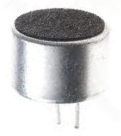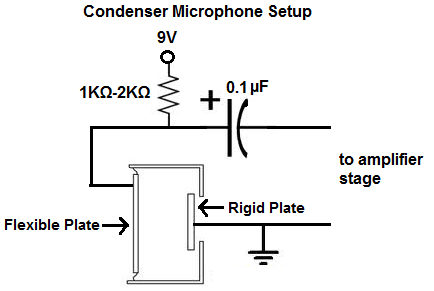Condenser Microphones

An Condenser microphone is a type of microphone that consists of a pair of charged plates that can be forced closer or further apart by variations in pressure. In effect, the plates act like a sound-sensitive capacitor.
One plate is made of a flexible metal or metal-coiled plastic that is positively charged by means of an external voltage source. The other plate is made of a rigid metal and serves as the ground of the microphone; it is fixed in place and grounded.
The condenser microphone is built with an amplifier attached to it. The amplifier is required to operate this type of microphone. A very low-noise, high-impedance amplifier is used and it provides a low output impedance. Without the amplifier, the microphone's output signal would be so low, it wouldn't be useful. The amplifier amplifies the microphone's recorded signal to a decent gain output signal.
A condenser microphone needs to receive an external voltage to both charge the diaphragm of the microphone so that the microphone can have charged plates (positive and negative plates) and to provide power to the amplifier.
Condenser microphones come with a specification to the amount of voltage needed for power. Check the datasheet of the condenser microphone in
use to see what bias power to provide the microphone. Also the datasheet will tell you what value resistor to tie the voltage to. Below is an example of a
condenser microphone receiving voltage and its attached resistor.

Condenser microphones offer crisp, low-noise sound and are used for high-quality sound recording.
Related Resources
What is an Electret Microphone?
What is a Dynamic Microphone?